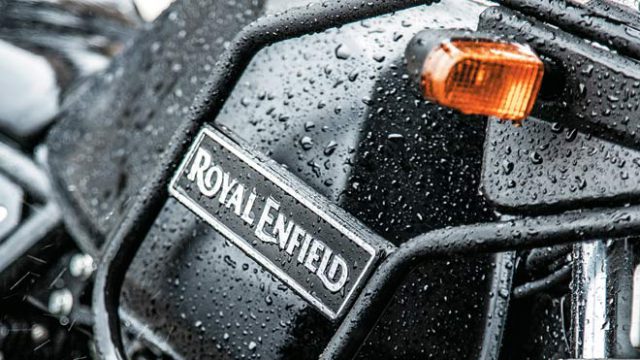The Himalayan looks like nothing else on Indian roads. At a time when automakers are trying to impress with bling and advertising appeal, Royal Enfield’s latest model is perhaps the most un-blingy of motorcycles. It is a touring motorcycle, purpose-built for the long haul; not a machine for the obsessive motorcyclist, who reads motoring magazines for technical specs of each new model.
The Himalayan is a simple, effective means for anybody attracted to faraway places and intending to get there on motorised two wheels. It lacks outstanding power and underwhelms the committed motorcyclist a little—at a time when India is awash with powerful motorcycles. Yet, the Himalayan is a landmark. There simply isn’t a motorcycle that attempts so many trade-offs between good performance and everyday functionality. And comes out a winner, for the most part.
It makes for a comfortable ride on the highway. The handlebar is high, the riding position upright, the suspension is firm enough to go around corners without a wobble. But get off the road, and you get at the business end of the Himalayan. It is nimble over unpaved surfaces, negotiates rocks and obstacles with a responsive attitude, crosses streams and other shallow waterbodies without a complaint (notice the upturned exhaust pipe), has adequate power for steep climbs, holds its own over slush and slippery surfaces, and fills the rider with confidence in difficult terrain. You can ride this motorcycle standing up for extended stretches, without your body revolting due to the jolting from punishing surfaces. It is a tall bike with adequate ground clearance, but you don’t have to be tall to ride it.

Among those involved in its design and development is our homegrown motorcycling legend, C.S. Santosh, the first Indian in 2015 to complete the Dakar rally, the world’s greatest test of off-road riding. The work shows in the responsiveness when you push your limits. The first ride of the Himalayan for 40-odd journalists happened in Shimla in March, on a combination of routes with varied road conditions—each featuring highways, trails, slush and unpaved roads. The weather turned foul. Rain and snow and sleet asked many questions of the riders’ resolve, with many of them giving up. None of the motorcycles had the slightest problem.
You do not have to be a C.S. Santosh, though, to ride the Himalayan. In fact, it is designed as the only motorcycle you’ll need to own. It suits new riders as well as those who own low-powered commuter bikes, but want to increase their riding range, transitioning from a utilitarian approach to vehicles for leisure and adventure.
The Himalayan is adroit at tackling the city commute—yes, it will look just fine with a sari guard to accommodate the wife on the pillion seat. Should the wife want to swap seats, she will not find any deterrence in the Himalayan; in fact, an enabling friend. The oversized 21-inch front wheel, designed for off-road riding, is great at handling pot-holes and bad roads. But the turning radius is quite small for a bike this big and heavy. It will not go through traffic in the manner of a scooter, but you won’t complain, either.
It is a forgiving motorcycle that can take you to the edges of your imagination. The frame has bolts for a pannier to carry luggage; the company has also released a range of luggage and pannier options, even a waterproof bag that hugs the tank with magnets. The tank is flanked by bars on which you can screw petrol cans (in case you are headed to areas with few fuel stations). This also means that the weight is more evenly distributed between the front and back.
It is not a bike that keeps you on the edge all the time, threatening to kill you for even a momentary lapse of concentration. If you are enjoying the scenery and views around you, the Himalayan is the kind of machine that can recede into the background, doing its job unobtrusively, in the manner of a seasoned butler. It will not complain if you haven’t read Robert M. Pirsig’s Zen and the Art of Motorcycle Maintenance. Or if you think that ‘Hayabusa’ is the Japanese name of the peregrine falcon, the fastest creature on the planet (and are unaware that Suzuki offers a 1,300-cc superbike named after it).
The company has priced the model just above the range of performance-oriented commuter motorcycles. A price meant to lure the commuter motorcyclist: `1,55,000, ex-showroom. Royal Enfield has also released a range of all-weather riding safety gear.
Royal Enfield’s dramatic corporate success over the past five years or so has as much to do with tapping the section of India that is coming into prosperity, that has aspirations. The brand’s retro-cool mobikes and image offers affordable classiness to the newly wealthy. With the Himalayan, the company has gone beyond its image and reputation. It has made a new promise of mobility and adventure.




